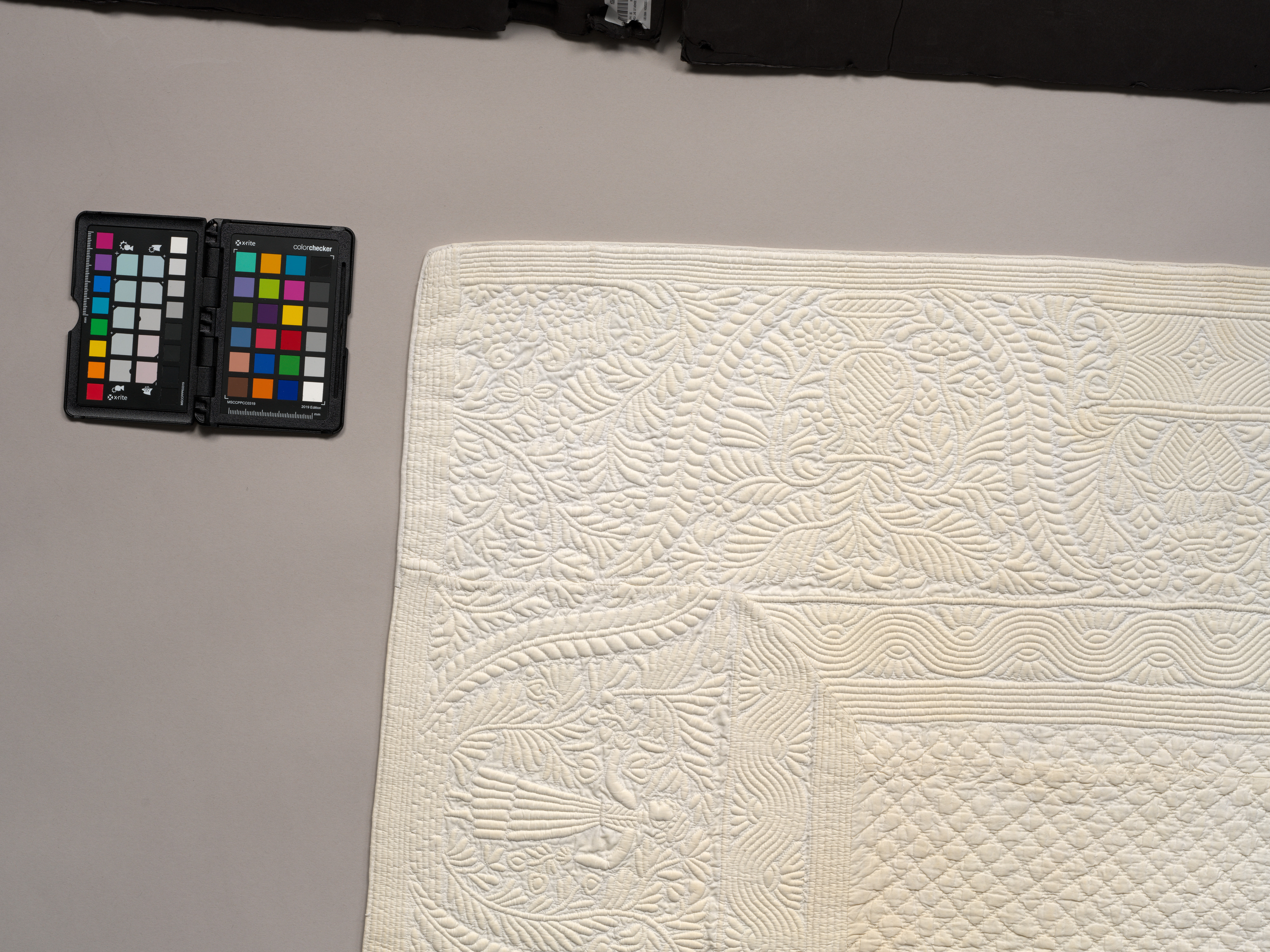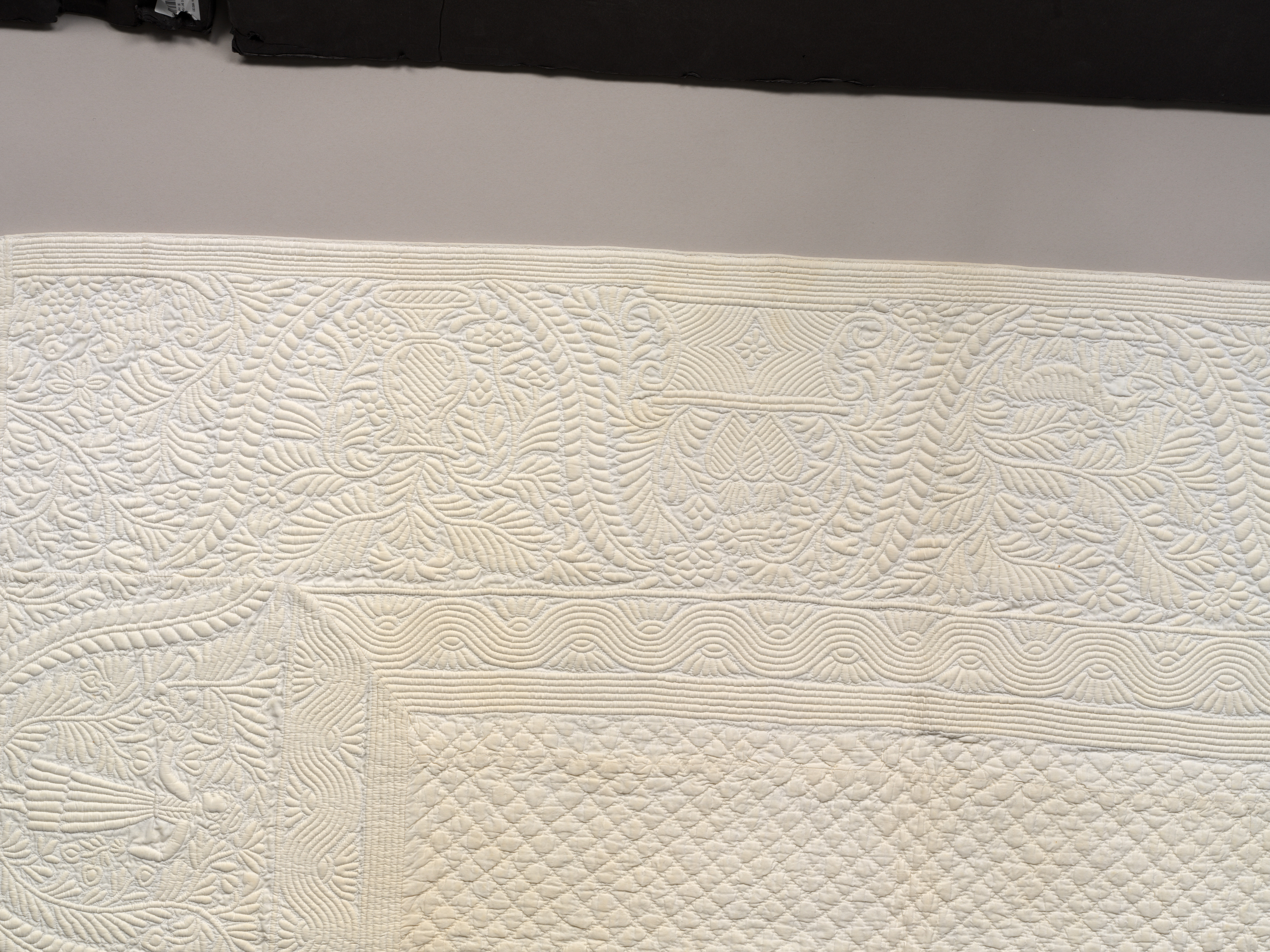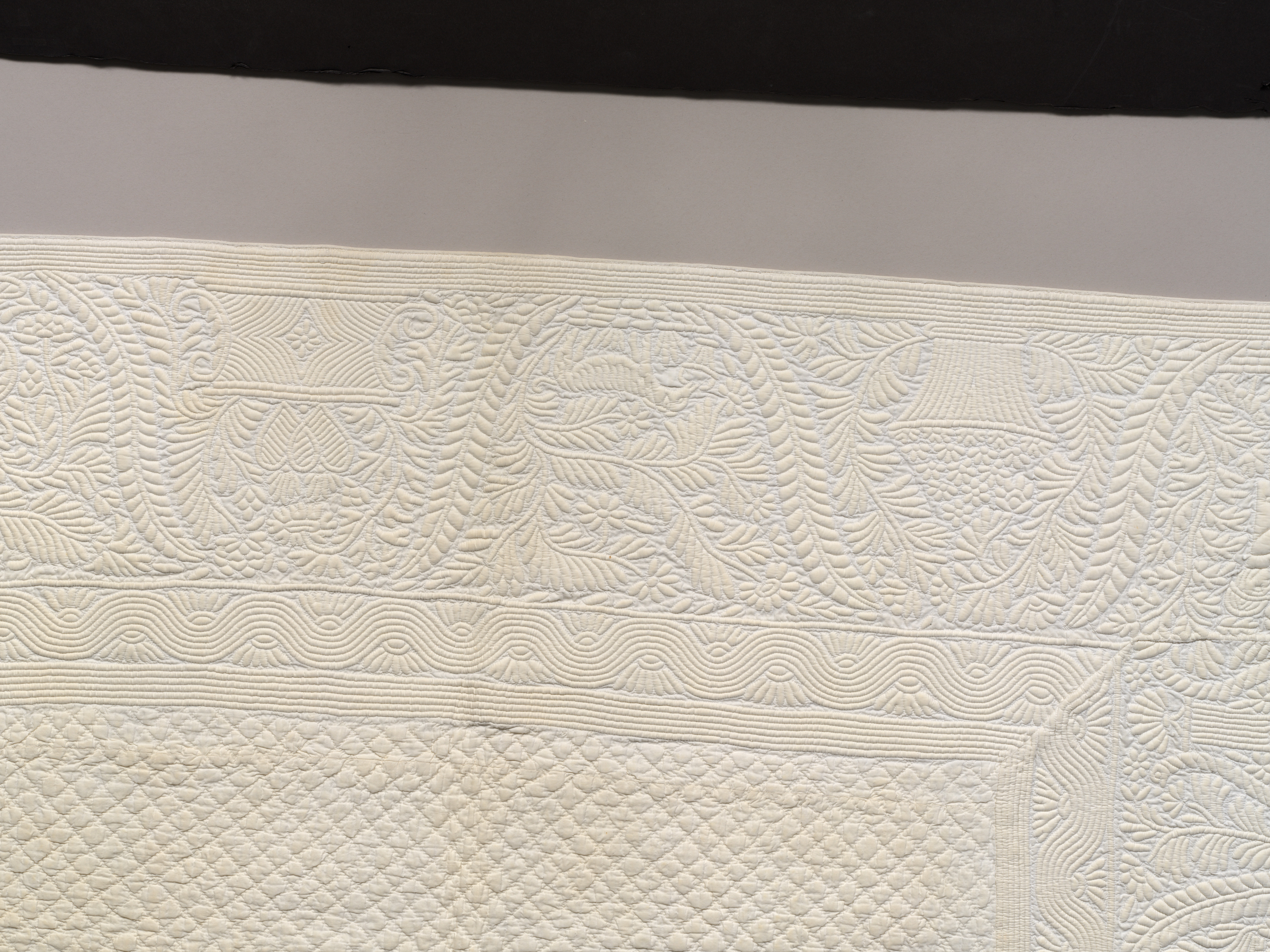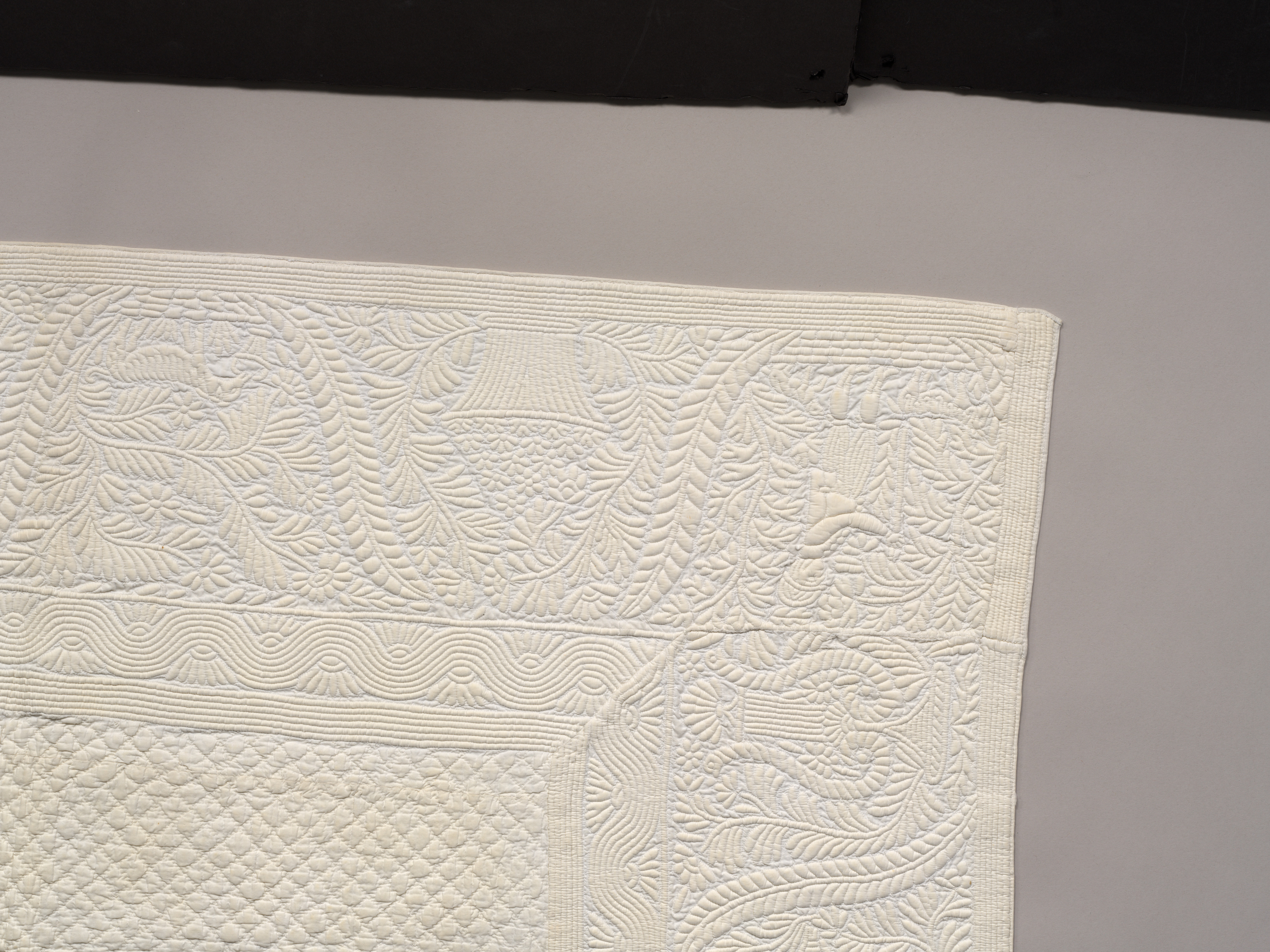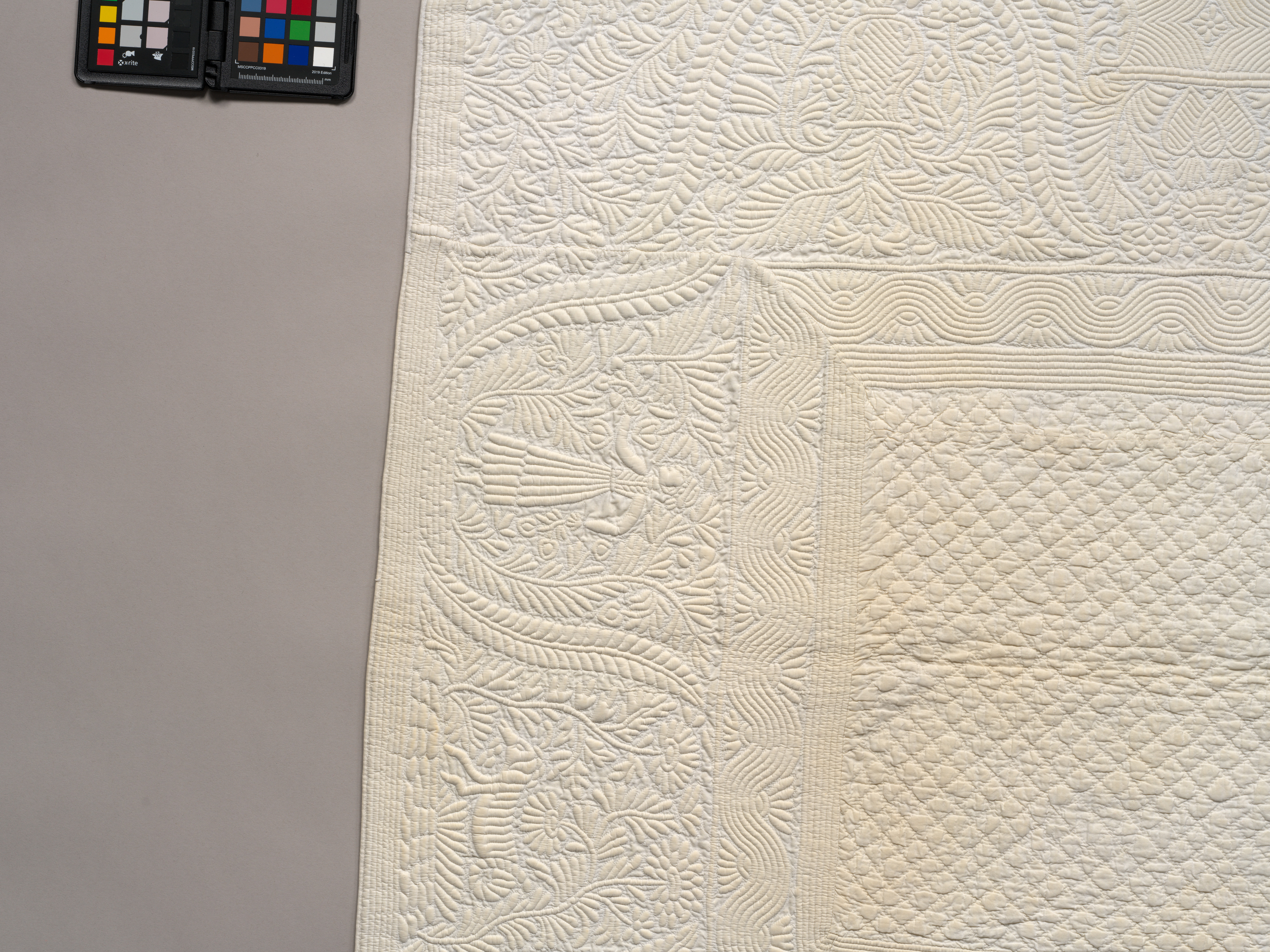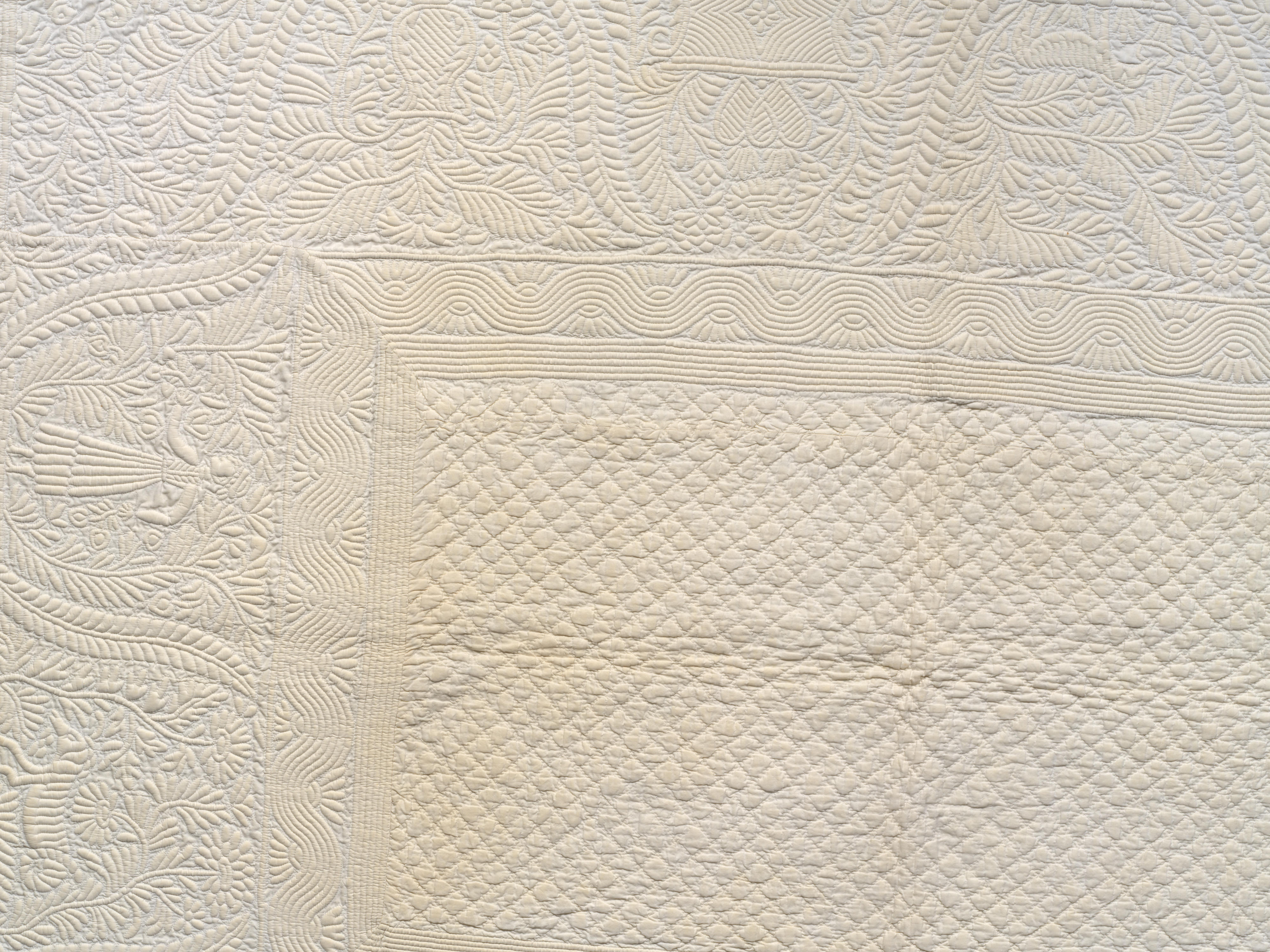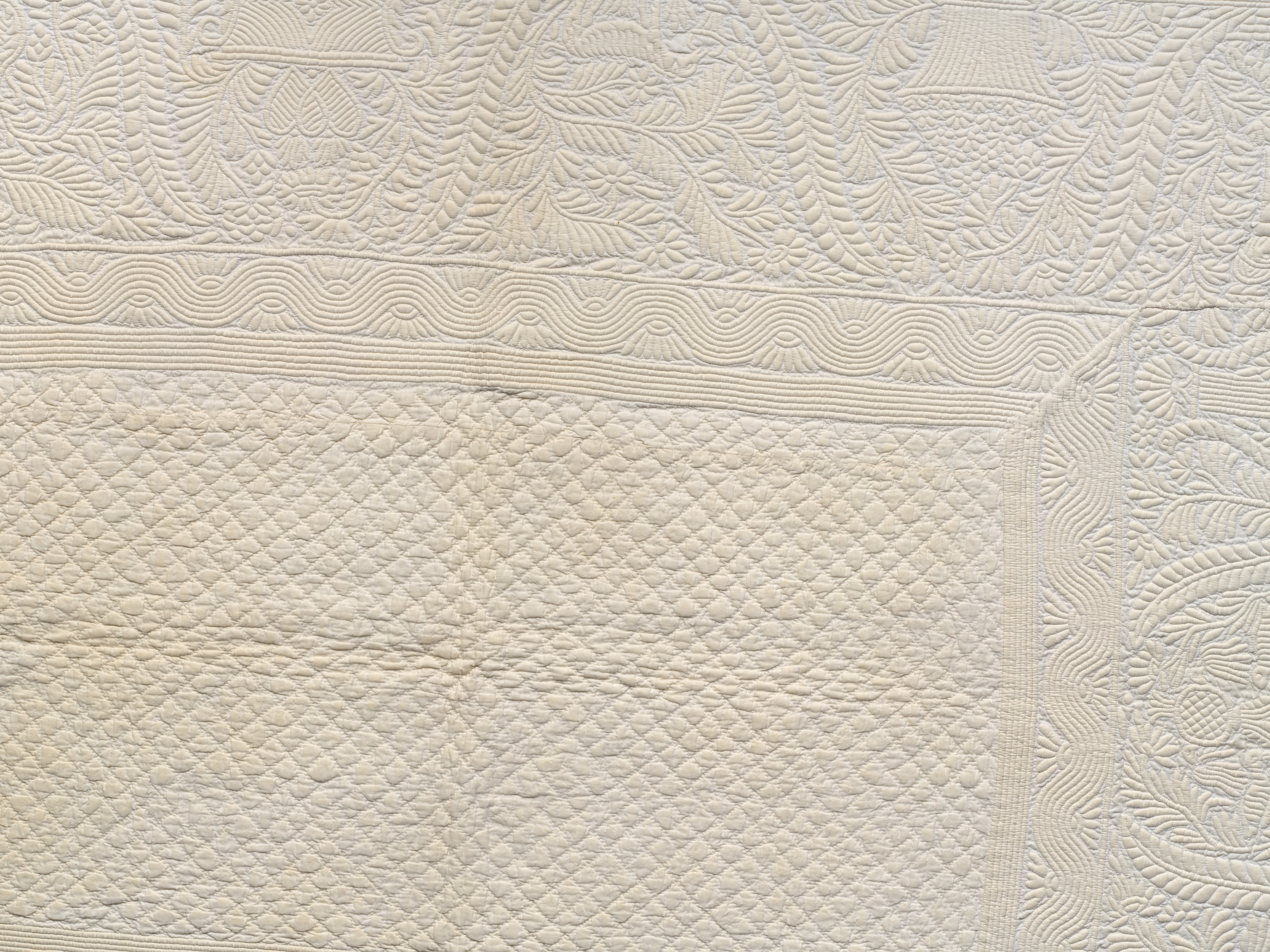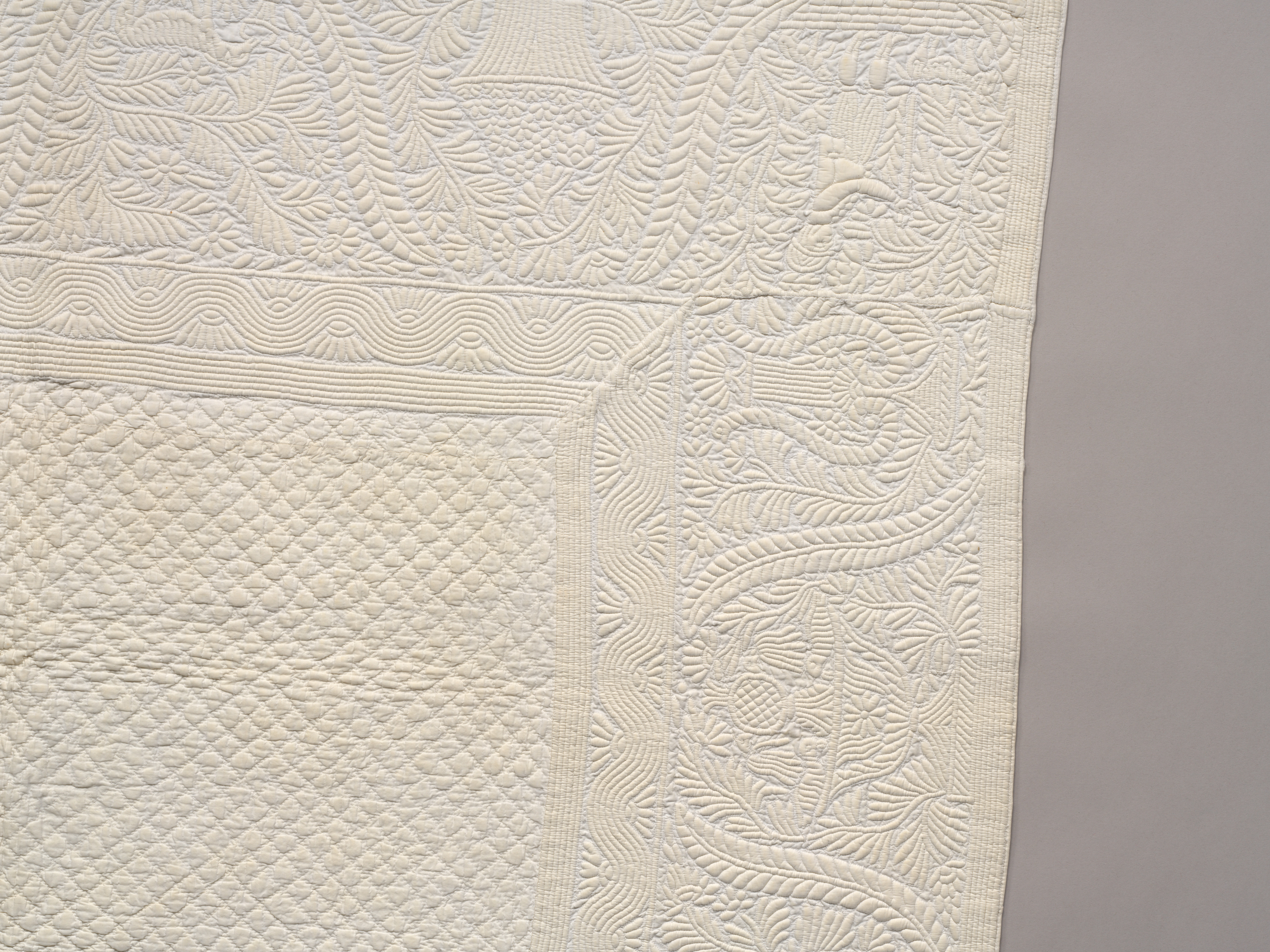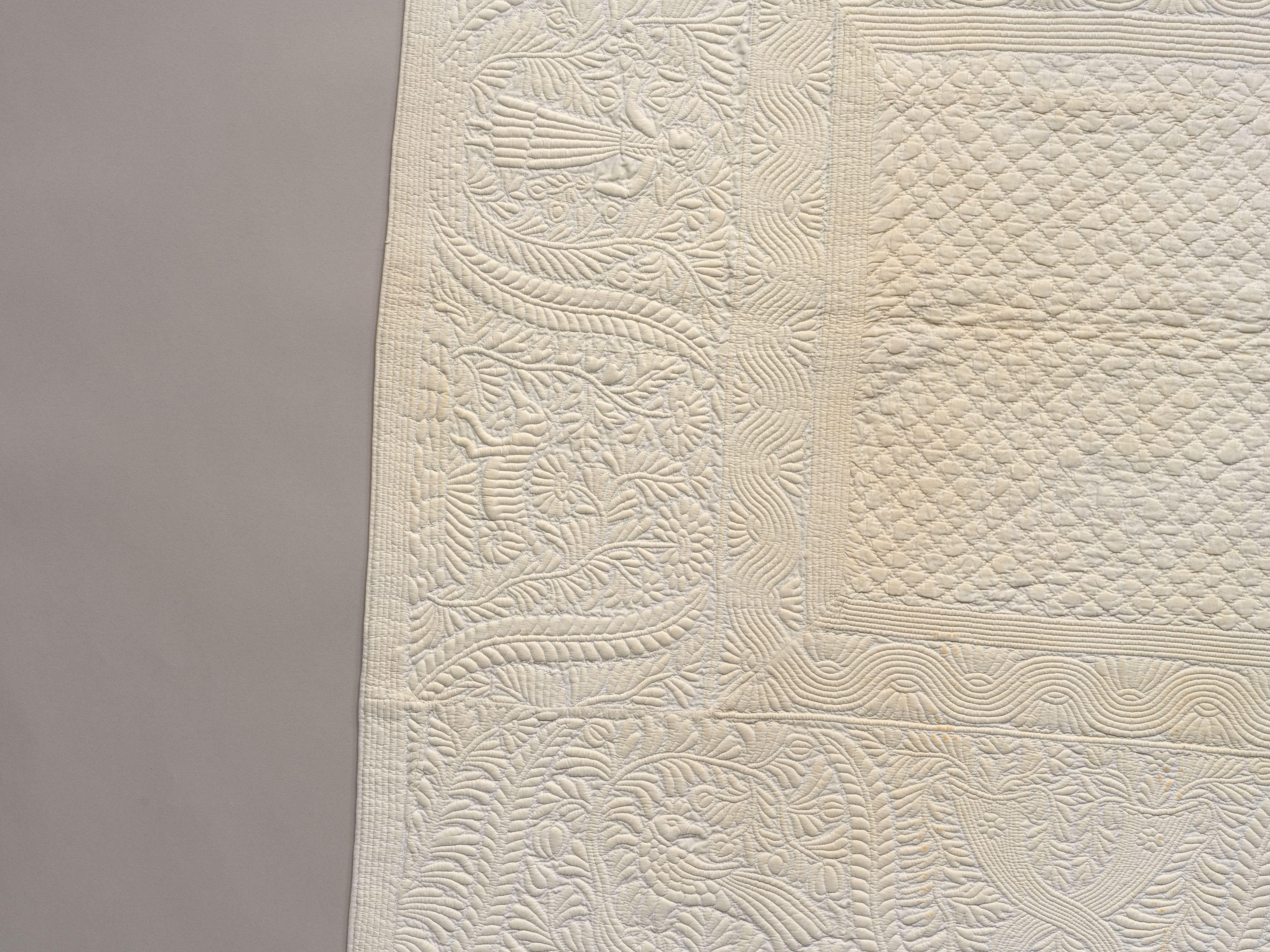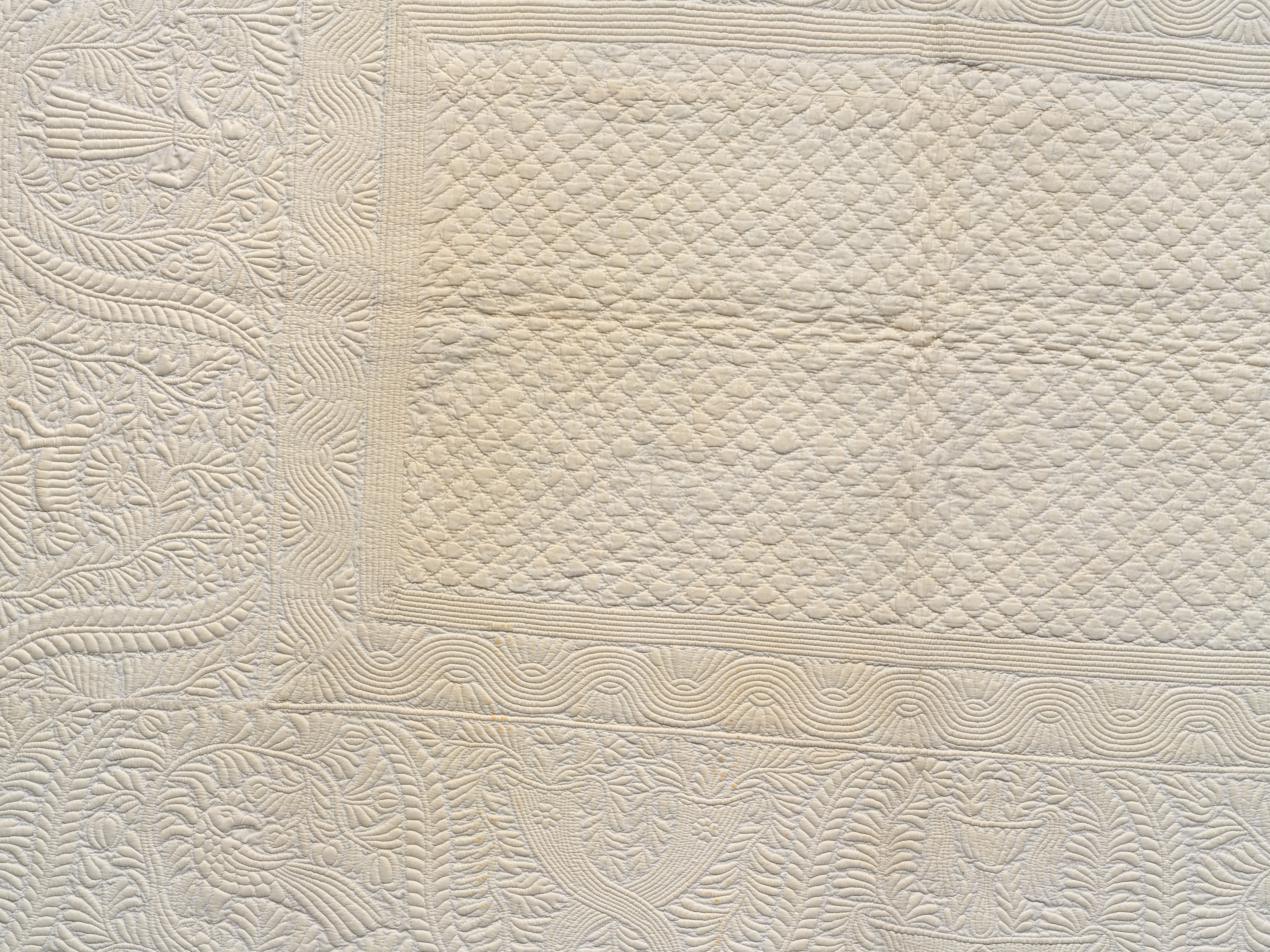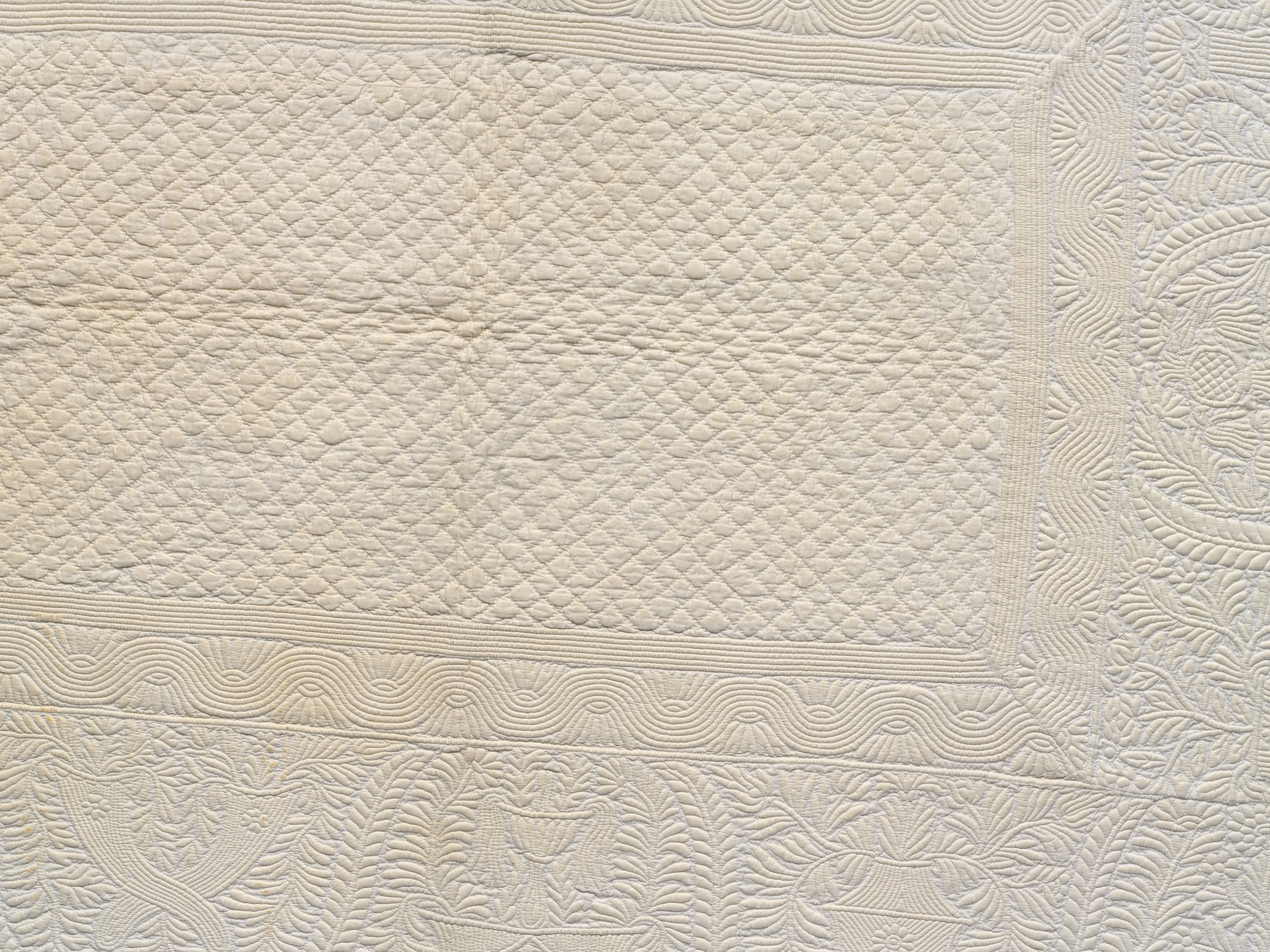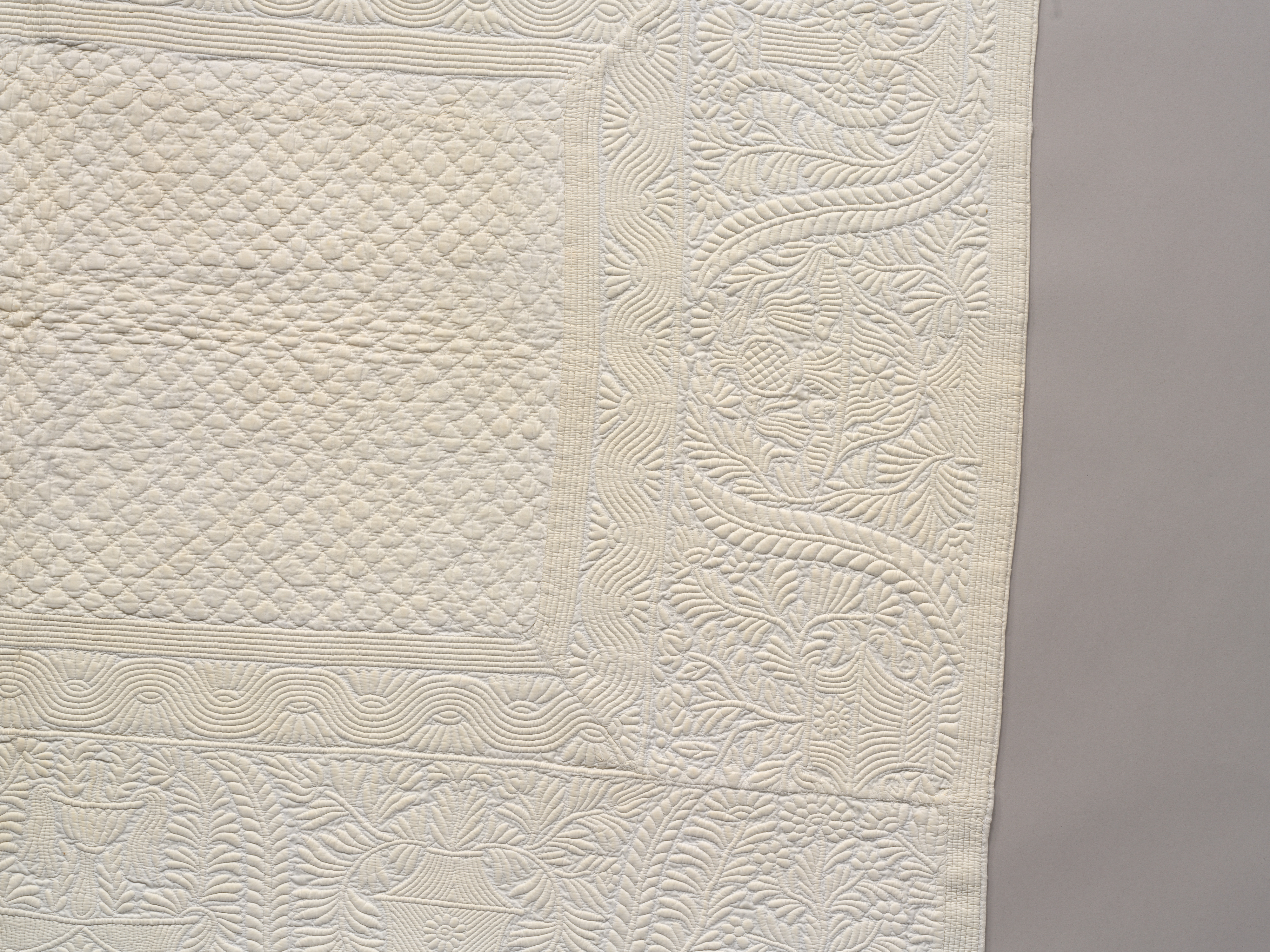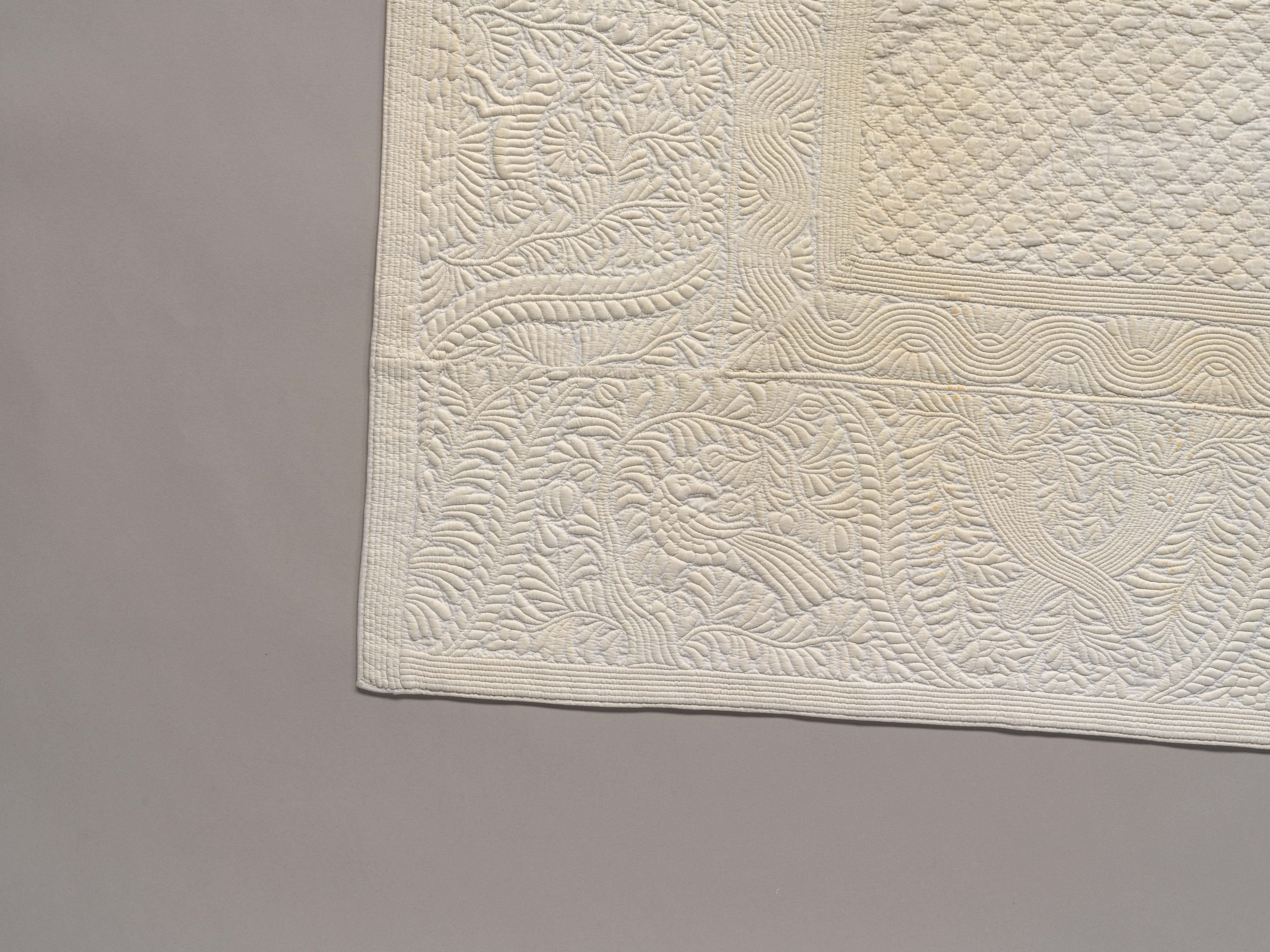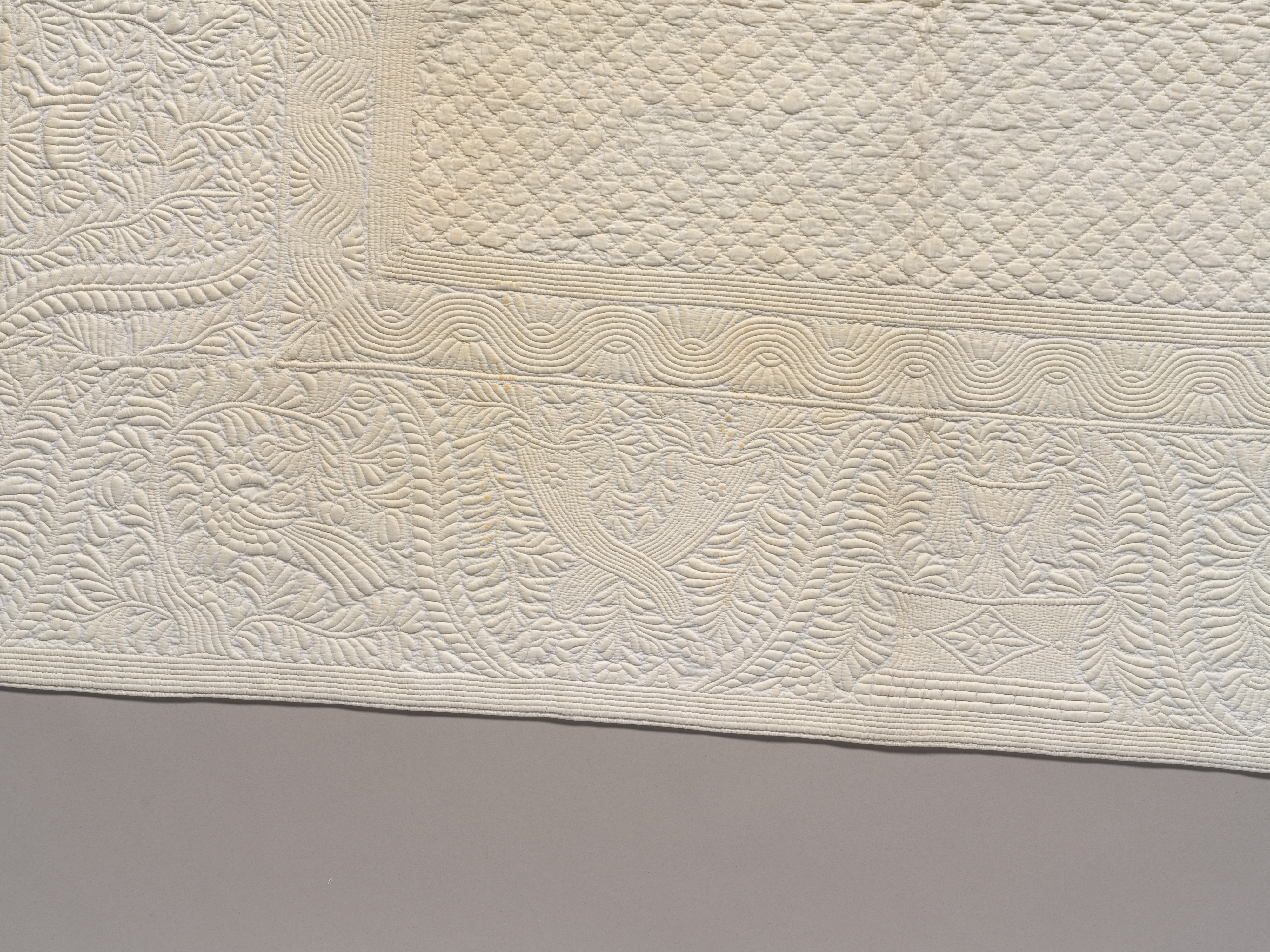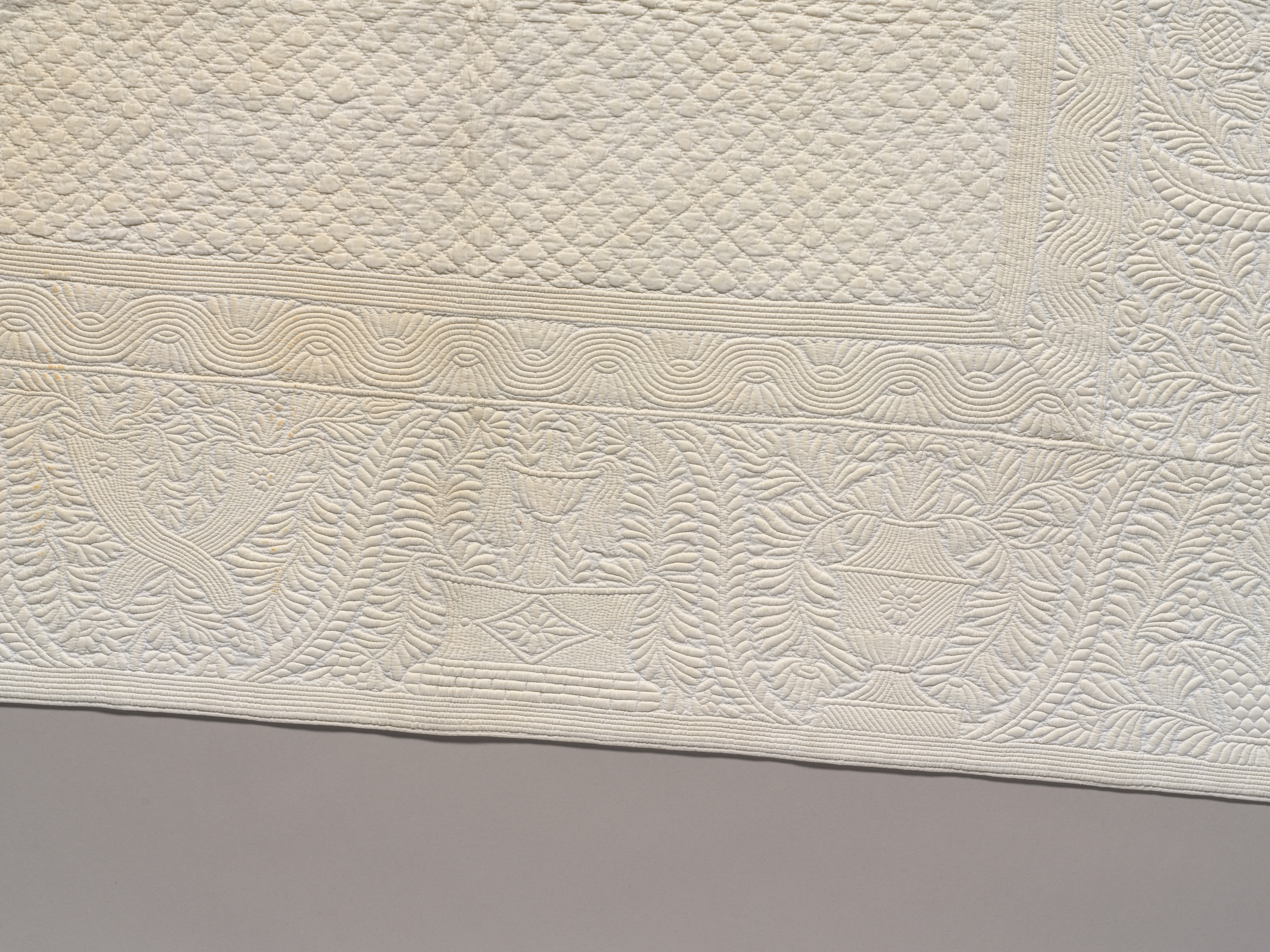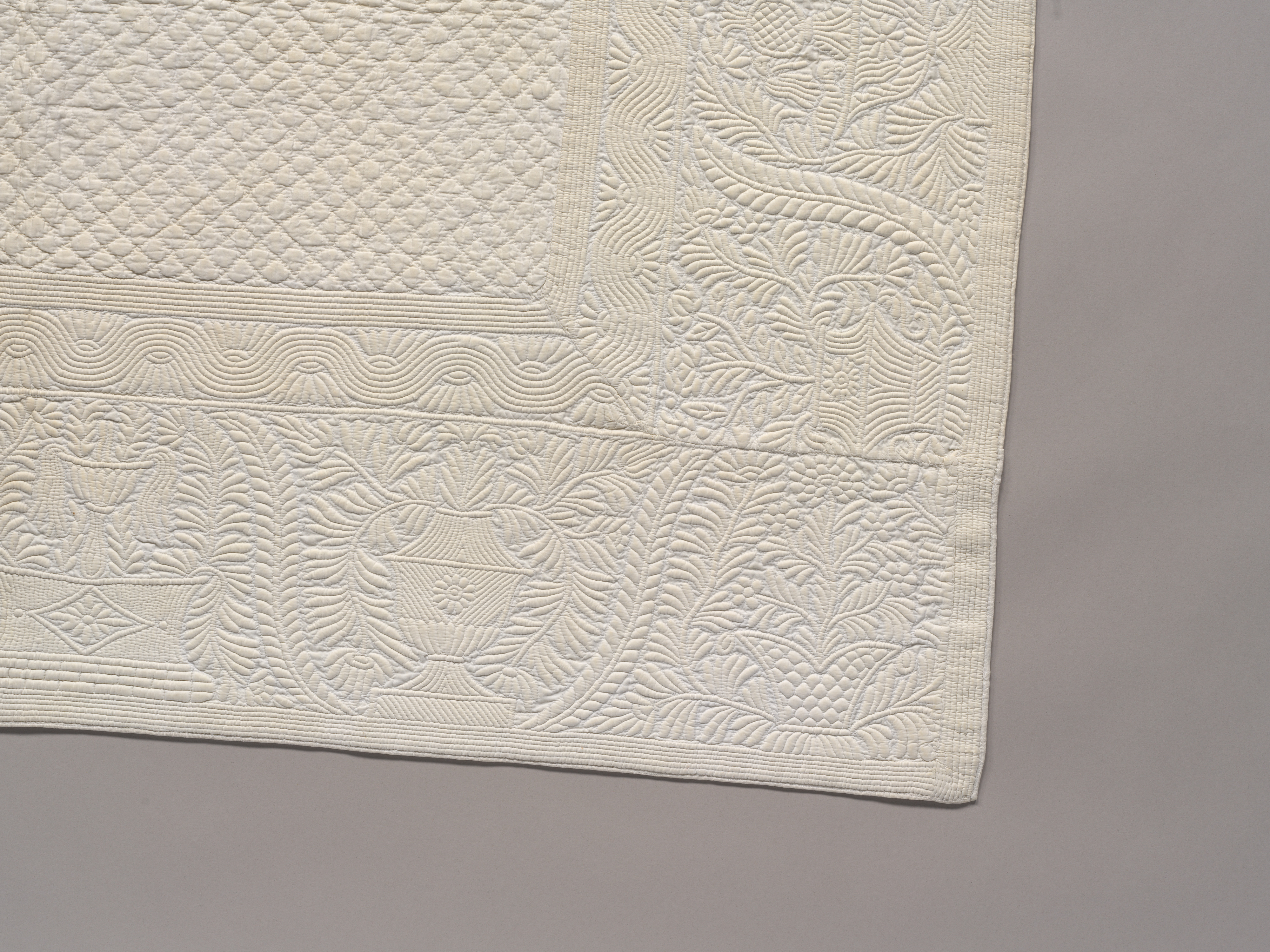Corded quilt
Not on view
The initial impression of simplicity conveyed by this elegant, monochromatic coverlet, probably made for a bed or table, belies the intense skill and virtuoso technique demanded of its creator. Historically described as “whitework,” this is a whole-cloth quilt (as opposed to a pieced or “patchwork” quilt). It is distinguished by a total absence of colored pigment: instead, the decorative and figurative design is achieved on a bleached white support via quilted stitching, with additional relief created by highlighting and shadowing by inserting cords between layers of support. Requiring considerably more skill and dexterity to stitch than pieced quilts, works like this were conventionally regarded in Europe as more subtle and tasteful than patchwork pieces. Distinguished by its crisp and legible designs of figures on horseback, maidens, lyres and hearts, set against a diaper-patterned ground, this is representative of the types of motifs popular on the Italian and Iberian peninsulas and in southern France, where this technique is traditionally believed to have originated. As also detectable in some other examples in US museum collections, this piece has been skillfully reduced in size at some point in its history, with the new mid-border seams so skillfully hidden within the contours of the patterning that they are almost invisible.
This image cannot be enlarged, viewed at full screen, or downloaded.
This artwork is meant to be viewed from right to left. Scroll left to view more.


